Complete Comprehensive Dental Exams
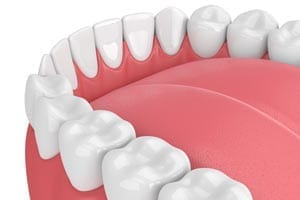 We understand that visiting the dentist can be a cause for anxiety. That’s why we’ve put together a breakdown of what to expect during a routine dental exam. A dental exam is crucial to your oral health, only your dentist can perform a dental exam.
We understand that visiting the dentist can be a cause for anxiety. That’s why we’ve put together a breakdown of what to expect during a routine dental exam. A dental exam is crucial to your oral health, only your dentist can perform a dental exam.
A standard dental exam consists of your dentist examining your mouth for signs or symptoms that could affect your oral or overall health. A dentist is trained to detect things you may not be able to see on your own. Wondering what we’re looking for? Here are some of the things that we investigate during a dental exam:
Damaged, missing or decaying teeth
- Early signs of cavities
- Condition of your gums, such as periodontal pockets, inflammation or other signs of gum disease (which can lead to tooth and bone loss)
- Examine how previous dental work such as root canals, fillings and crowns are holding up
- Early signs of mouth or throat cancer, such as white lesions or blocked salivary glands
- Other suspicious growths or cysts
Position of your teeth (e.g., spacing, bite)
Signs that you clench or grind your teeth (a treatable problem that can cause headache or sore jaw and can, if serious, lead to hearing loss and tooth loss)
Signs of bleeding or inflammation on your tongue and on the roof or floor of your mouth
The overall health and function of your temporomandibular joint (which joins the jaw to skull), checking for signs of disorders that can cause pain or tenderness
The general condition of the bones in your face, jaw and around your mouth
Scheduling a regular dental exam can prevent more severe problems before you see or even feel them. After the initial inspection, your dentist will perform a visual examination that may include the following:
A complete medical history so the dentist knows about any health conditions that may affect the success of dental treatments or procedures or that may be associated with oral health problems.
- An examination of your neck area, with the dentist feeling the glands and lymph nodes for possible signs of inflammation that could indicate general health problems; and
- Dental X-rays, if necessary. These can show such problems as cavities under existing fillings, fractures, impacted wisdom teeth, decay under your gum line and bone loss caused by gum disease.
Your dentist will explain what is happening, what they are looking for or what they’ve found during or prior to the examination. Please don’t hesitate to ask any questions. It’s our priority to provide excellent care and that starts with you understanding your oral health.
The more your dentist knows, the more effective they can be at addressing your dental care needs. Be sure to tell your dentist if any of the following pertains to you:
Any new medical conditions you’ve been diagnosed with since your last visit, such as diabetes or AIDS, even if they don’t seem pertinent. Your dentist needs to know to properly manage your treatment and prevention program.
- Any new medications you’re taking (side effects can often include dry mouth and overgrown gums)
- If you’re pregnant
- If you have any allergies
- Any changes you’ve noticed in your teeth, such as changes in colour, looseness or position
- Any changes you’ve noticed in your gums, such as bleeding when you brush or floss, or changes in appearance
- Any increased sensitivity to heat, cold or sweets
- Whether your floss catches on rough edges, causing it to shred
- Any colour changes in the skin on the inside of your mouth
- If you smoke or chew tobacco (which increases the likelihood of oral cancer)
- If your neck or jaw muscles are tight or if you’re aware of clenching or grinding your teeth
- If you’re nervous about going to the dentist—new ways of doing things have made modern dentistry more comfortable for patients, and talking to your dentist may reassure you and help you feel more relaxed
Tooth Coloured Fillings, Crowns & Bridges

Dental Fillings
Fillings are used to repair decayed teeth, minimal fractures, and other damaged surfaces of the teeth. Dental filling materials, such as composite bonding, can also be used to even out the surface of your teeth for better biting and chewing. In many cases, patients with enamel loss, resulting in sensitivity, will notice a significant improvement of sensitivity once the teeth have been treated with a dental filling
Crowns
If your tooth is damaged but not lost, a crown can be used to restore its shape, appearance and function. You may need a crown if you have a root canal, a large filling in a tooth or a broken tooth. A crown also called a cap, is a hollow, artificial tooth used to cover a damaged or decayed tooth. The crown restores the tooth and protects it from further damage. Crowns can also be used to cover a discoloured or misshapen tooth. A tooth that has been fixed with a crown looks and works very much like a natural tooth.
Bridges
A bridge also called a “fixed bridge” or a “fixed dental prosthesis,” is a dental restoration that replaces one or more missing teeth. It extends across an area that has no teeth and is typically made up of an artificial tooth fused between 2 crowns. (A crown is a hollow, artificial tooth that fits over a natural tooth or a dental implant). The bridge is held firmly in place by your own teeth on each side of the missing one(s) or by dental implants. A bridge is permanent and cannot be removed.
Orthodontic Treatment
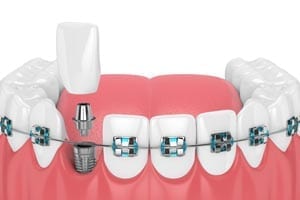 People of any age can benefit from orthodontic treatment. Teeth that are crooked, crowded or that stick out affects the way your teeth look and work. Orthodontic treatment not only improves the look of your smile but your health as well. Straight teeth are easier to clean and less likely to get tooth decay or injured.
People of any age can benefit from orthodontic treatment. Teeth that are crooked, crowded or that stick out affects the way your teeth look and work. Orthodontic treatment not only improves the look of your smile but your health as well. Straight teeth are easier to clean and less likely to get tooth decay or injured.
If you are not happy with the way your teeth look or work, orthodontic treatment may help. Orthodontic treatment straightens your teeth so they look and work better. Braces or other appliances are used to put gentle pressure on your teeth. Over a number of months or years, this pressure can move your teeth into the right position.
Extractions
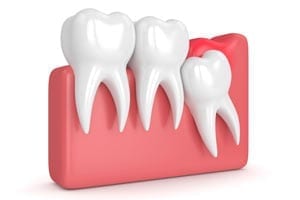 An extraction means to have a tooth removed, usually because of disease, trauma or crowding. If you need an extraction, Dr. Wid will first numb the area to lessen any discomfort. After the extraction, she will advise you of what post extraction regimen to follow. In most cases a small amount of bleeding is normal. Your mouth will slowly fill in the bone where the tooth root was through the formation of a blood clot.
An extraction means to have a tooth removed, usually because of disease, trauma or crowding. If you need an extraction, Dr. Wid will first numb the area to lessen any discomfort. After the extraction, she will advise you of what post extraction regimen to follow. In most cases a small amount of bleeding is normal. Your mouth will slowly fill in the bone where the tooth root was through the formation of a blood clot.
Root Canal Treatment
 Root canal treatment, also known as endodontic treatment, is the process of removing infected, injured or dead pulp from your tooth. The space inside the hard layers of each tooth is called the root canal system. This system is filled with soft dental pulp made up of nerves and blood vessels that help your tooth grow and develop. When bacteria (germs) enter your tooth through deep cavities, cracks or flawed fillings, your tooth can become abscessed.
Root canal treatment, also known as endodontic treatment, is the process of removing infected, injured or dead pulp from your tooth. The space inside the hard layers of each tooth is called the root canal system. This system is filled with soft dental pulp made up of nerves and blood vessels that help your tooth grow and develop. When bacteria (germs) enter your tooth through deep cavities, cracks or flawed fillings, your tooth can become abscessed.
An abscessed tooth is a tooth with an infection in the pulp. If pulp becomes infected, it needs to be removed. An abscessed tooth may cause pain and/or swelling. Dr. Wid may notice the infection from a dental X-ray or from other changes with the tooth. If left untreated, an abscessed tooth can cause serious oral health problems.
Cleaning & Preventative Dentistry
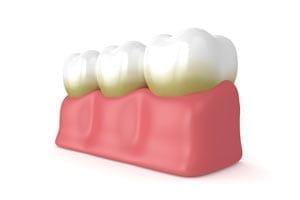 The best way to avoid dental problems, such as cavities, gum disease, dental pain and other emergencies is to prevent them in the first place. Making sure that you have a great at home oral care routine, plus visits to see your dentist for regular check-ups and dental cleaning at least every 6 months is your first step towards great oral health and even better dental visits!
The best way to avoid dental problems, such as cavities, gum disease, dental pain and other emergencies is to prevent them in the first place. Making sure that you have a great at home oral care routine, plus visits to see your dentist for regular check-ups and dental cleaning at least every 6 months is your first step towards great oral health and even better dental visits!
Regular dental cleanings will usually go hand in hand with a comprehensive oral exam or a regular (recall) exam unless you require or request more frequent cleanings. The exam will help diagnose any area of concern you or the dentist may have. Your mouth is always changing and a tooth that didn’t have any issues 6 months ago, may need some attention. That is why frequent checkups (exams) are necessary – to prevent any larger problems in the future! Once the exam has been completed, the dentist or hygienist will perform a regular cleaning or prophylaxis. For individuals with gum disease, the dentist will recommend a deep cleaning to treat the issue and allow your tissues to heal.
Once your cleaning is done, one of our staff members will follow up with you about any treatment the doctor recommended, and make any necessary follow up appointments.
Veneers
 If you are looking to change the look of your otherwise healthy teeth, veneers may be the solution you are looking for! Veneers are very thin shells that are attached to the front part of the teeth. They are often made of porcelain or composite resin. Porcelain veneers are stronger than composite resin veneers and do not change colour or stain. Generally, porcelain veneers take at least 2 dental visits to apply and composite resin veneers can be done in 1 visit. Porcelain veneers generally last longer than composite resin veneers.
If you are looking to change the look of your otherwise healthy teeth, veneers may be the solution you are looking for! Veneers are very thin shells that are attached to the front part of the teeth. They are often made of porcelain or composite resin. Porcelain veneers are stronger than composite resin veneers and do not change colour or stain. Generally, porcelain veneers take at least 2 dental visits to apply and composite resin veneers can be done in 1 visit. Porcelain veneers generally last longer than composite resin veneers.
Teeth Whitening
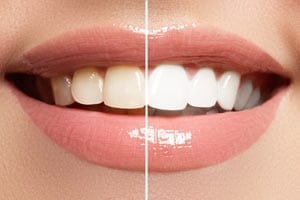 Wondering about the pros and cons of teeth whitening? For most patients, the natural colour of their teeth is a range of light grey-yellow shades. It is natural for your teeth to begin to darken with age. The rate of this can be increased due to surface stains from tobacco products as well as certain foods or drinks.
Wondering about the pros and cons of teeth whitening? For most patients, the natural colour of their teeth is a range of light grey-yellow shades. It is natural for your teeth to begin to darken with age. The rate of this can be increased due to surface stains from tobacco products as well as certain foods or drinks.
Skin tone and makeup also affect how white you perceive your teeth to be. People with darker skin tones or who use dark makeup will appear to have brighter, whiter teeth. Teeth are not meant to be completely white, although many of us desire a whiter smile hence why Health Canada classifies teeth whitening as cosmetic in nature. In response to this, there are a wide variety of products available to consumers that are either considered surface whiteners or bleaches.
Surface Whiteners
These products use special abrasives to improve the product’s ability to remove surface stains. Most products in this category are either toothpaste or chewing gums. Because the special abrasives in these whitening products are often only finer versions of what is used in regular toothpaste, they are unlikely to cause excessive tooth wear. However, the effectiveness of these products is limited to surface stains and should not be used as a substitute for professional cleaning.
Bleaches
Most bleaching products are peroxide-based and are actually capable of altering the colours of the tooth itself. However, not all tooth discolourations respond to tooth-bleaching treatments. Individuals contemplating tooth-bleaching should consult with a dentist to determine the cause of the tooth discolouration and to determine whether a bleaching treatment will have the desired result. This step is especially important for patients with fillings, root canal treatments, crowns and/or with extremely dark stains on the anterior teeth.
A number of different bleaching techniques and products are available to patients. Your dentist will use one of these two methods to whiten your teeth:
Vital bleaching is done on “living” teeth and can be used to whiten your teeth if they have become stained by food or tobacco, or if they have become dark with age.
- Non-vital bleaching is bleaching done on teeth that are no longer “alive.” If your tooth has changed colour because of a root canal, non-vital bleaching can lighten your tooth from the inside out.
Here are three methods for bleaching teeth. The method that will work best for you depends on the number of teeth that need to be bleached, and on how badly they are stained (or discoloured).
Your dentist may suggest:
- Putting a special bleach on your stained teeth and using heat (or heat and light) to start the bleaching action; or
- Wearing a custom-made mouth-guard filled with a special bleach for part of each day; or
- Brushing with a special bleach mixed in toothpaste.
Bleaching should be done only under a dentist’s care. Tooth-bleaching under controlled dental office conditions may be safe and effective, but the new in-office vital tooth-bleaching techniques, particularly those using lasers and lights, have undergone little scientific assessment.
Home-use tooth-bleaching systems are available to the general public, either from a dentist or from various retail outlets. Clinical studies support the safety and effectiveness of home-use bleaching gels when used appropriately. Tooth sensitivity and irritation to soft tissues can occur during bleaching treatment, but these effects are transient. Yet the effects of long-term tooth-bleaching are unknown and need to be researched, especially since the effect is not permanent and many individuals end up undergoing periodic bleaching treatments.
Oral Cancer Screening
 Oral cancer is a disease resulting from abnormal cell growth in the mouth, lips, tongue or throat. In 2003, an estimated 3,100 new cases of oral cancers were identified in Canada, and about 1,090 deaths occurred as a result of the disease. People over the age of 45 are most at risk. The good news is that oral cancer can be treated successfully if caught early enough. Dr. Wid has the expert skill and training to detect early signs of the disease and can help you to understand your risks.
Oral cancer is a disease resulting from abnormal cell growth in the mouth, lips, tongue or throat. In 2003, an estimated 3,100 new cases of oral cancers were identified in Canada, and about 1,090 deaths occurred as a result of the disease. People over the age of 45 are most at risk. The good news is that oral cancer can be treated successfully if caught early enough. Dr. Wid has the expert skill and training to detect early signs of the disease and can help you to understand your risks.
Invisalign
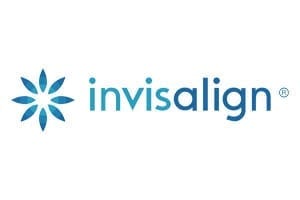 Invisalign straightens your teeth using a custom-made series of aligners created for you and only you. These aligner trays are made of smooth, comfortable and virtually invisible plastic that you wear over your teeth. They gradually and gently shift your teeth into place. There are no metal brackets to attach and no wires to tighten. You just pop in a new set of aligners approximately every two weeks, until your treatment is complete. You’ll achieve a great smile with little interference to your daily life.
Invisalign straightens your teeth using a custom-made series of aligners created for you and only you. These aligner trays are made of smooth, comfortable and virtually invisible plastic that you wear over your teeth. They gradually and gently shift your teeth into place. There are no metal brackets to attach and no wires to tighten. You just pop in a new set of aligners approximately every two weeks, until your treatment is complete. You’ll achieve a great smile with little interference to your daily life.
Emergency & Same Day Appointments
For emergency dental care, we strive to see our patients within 24 hours (within business hours), and the same day if at all possible. New patients are always welcome. The purpose of your visit will be to relieve the discomfort, diagnose the problem and advise you of your options for resolving it. You may need an urgent visit for a dental emergency if you have:
- A broken tooth
- A tooth ache
- A lost crown or filling
- Any pain or infection in your mouth, face or neck area
- Any other dental problem or discomfort
Digital X-Rays
Digital X-rays are the newest, safest technology for acquiring dental X-rays, using about half the radiation of conventional X-ray taking methods. Images are captured using a flat electronic sensor which relays directly to the computer for immediate review by your dental health care professional.
Laughing Gas Sedation
Nitrous oxide is a safe and effective sedative agent that is mixed with oxygen and inhaled through a small mask that fits over your nose to help you relax during certain procedures. It is not intended to put you to sleep. You will be able to hear and respond to any requests or directions Dr. Wid may have. Dr, Wid will ask you to breathe normally through your nose, and within a few short minutes, you should start to feel the effects of the nitrous oxide. Ultimately, you should feel calm and comfortable. The effects of nitrous oxide wear off soon after the mask is removed.

